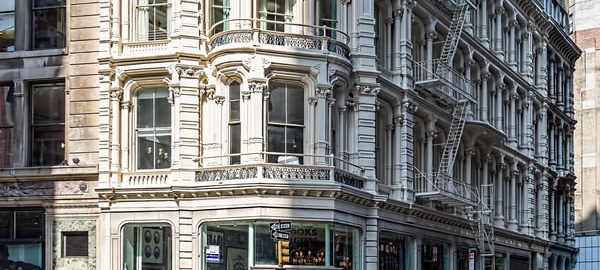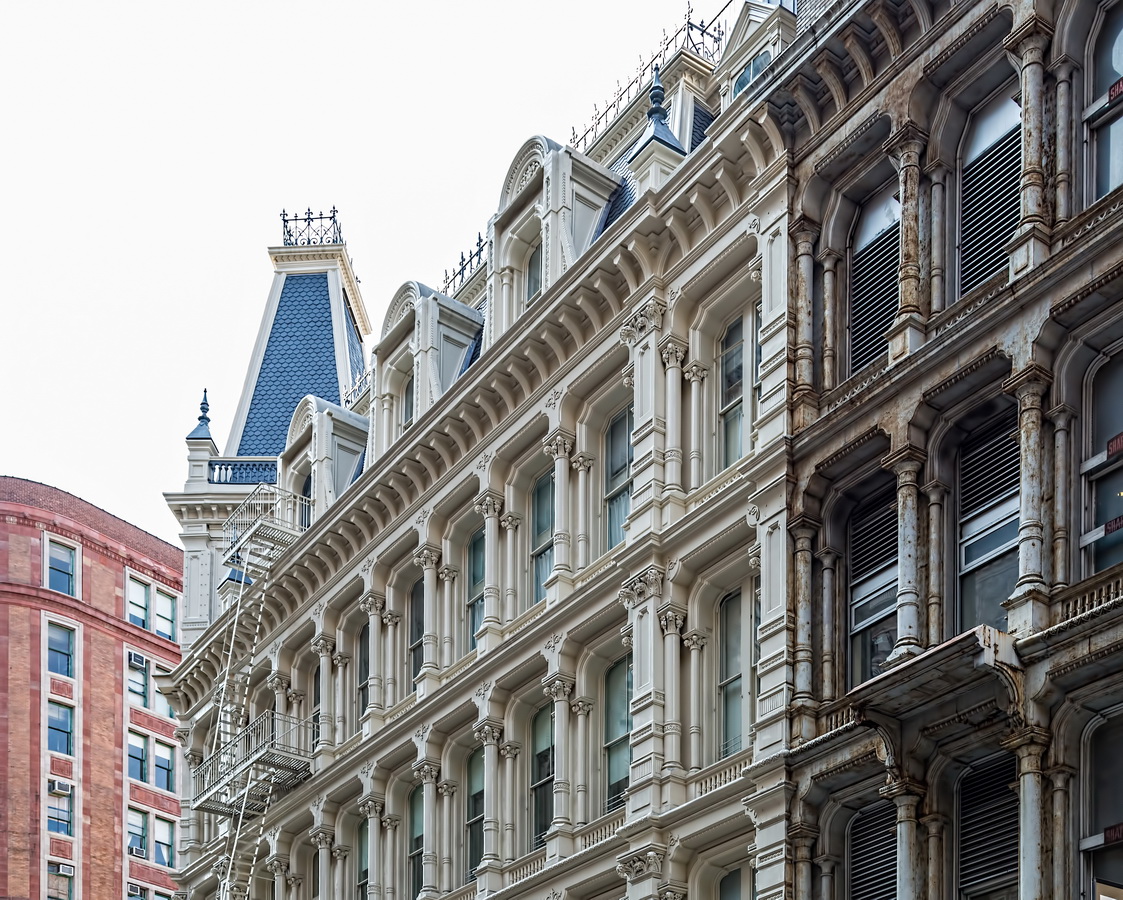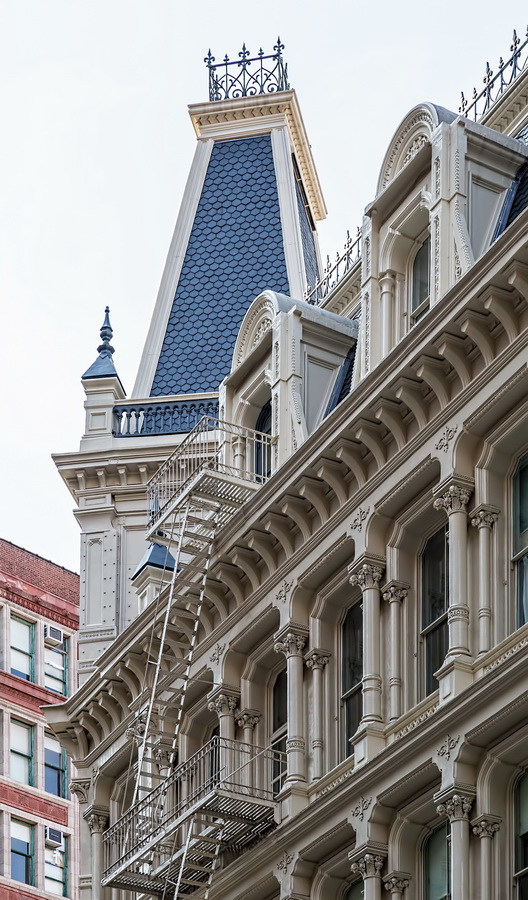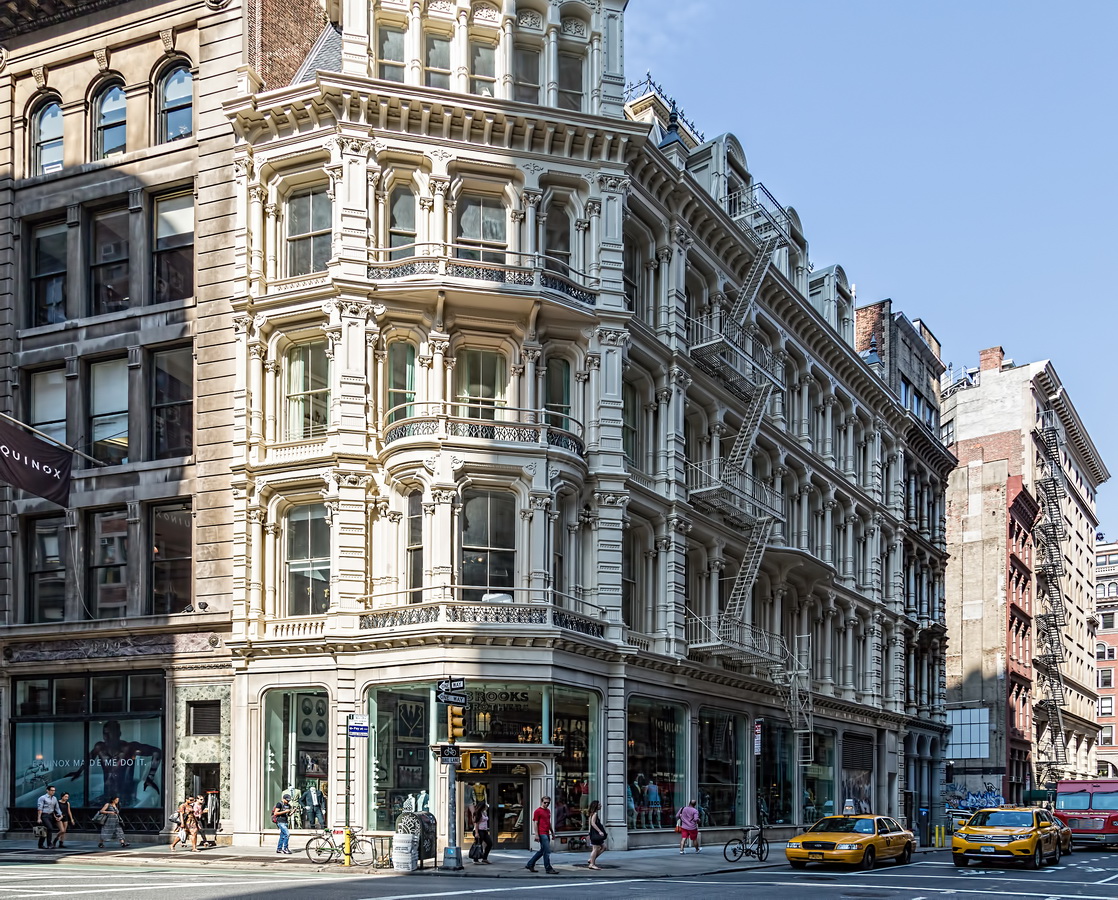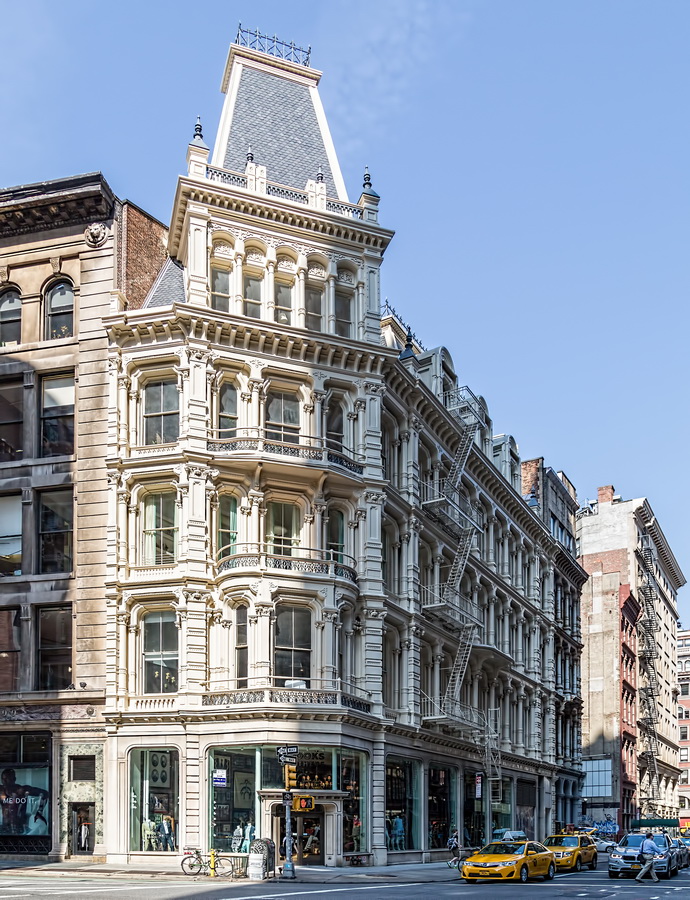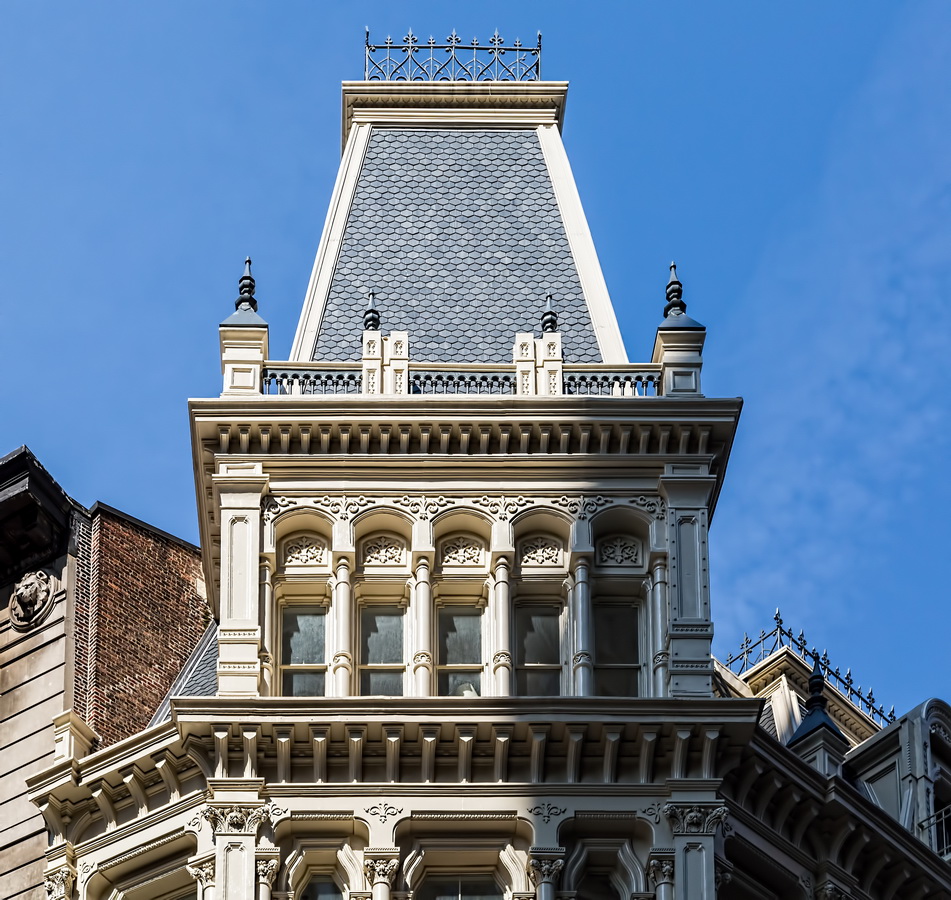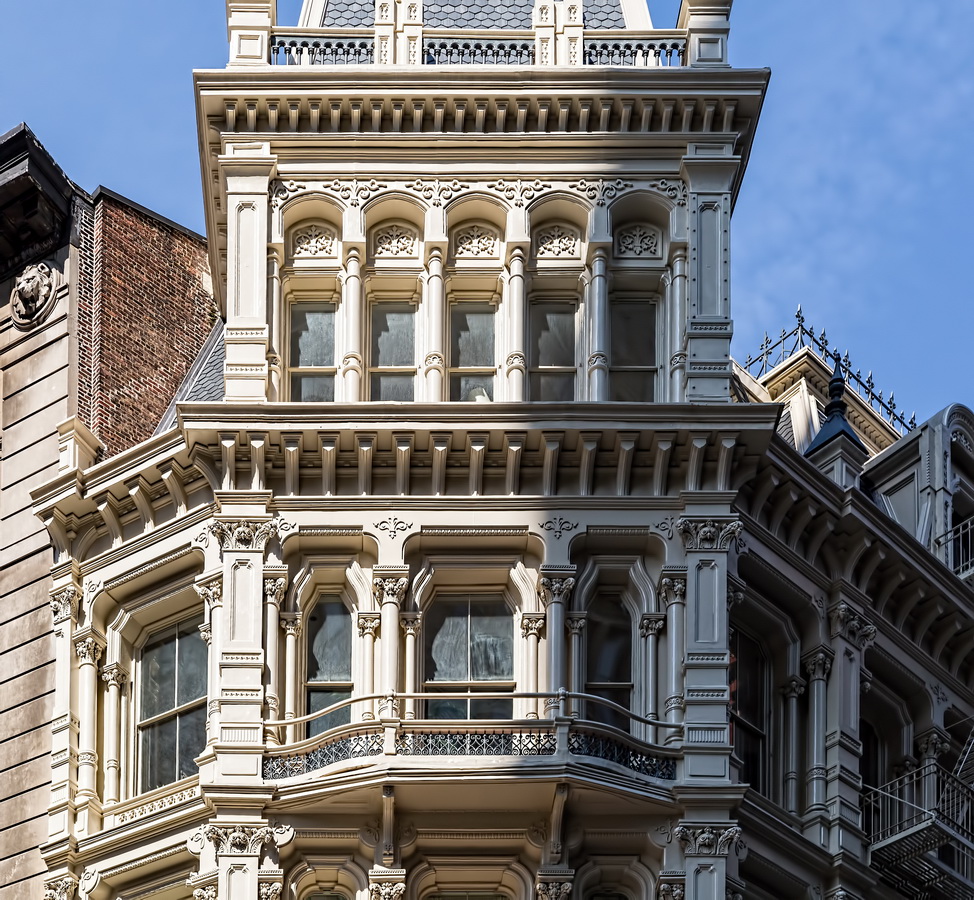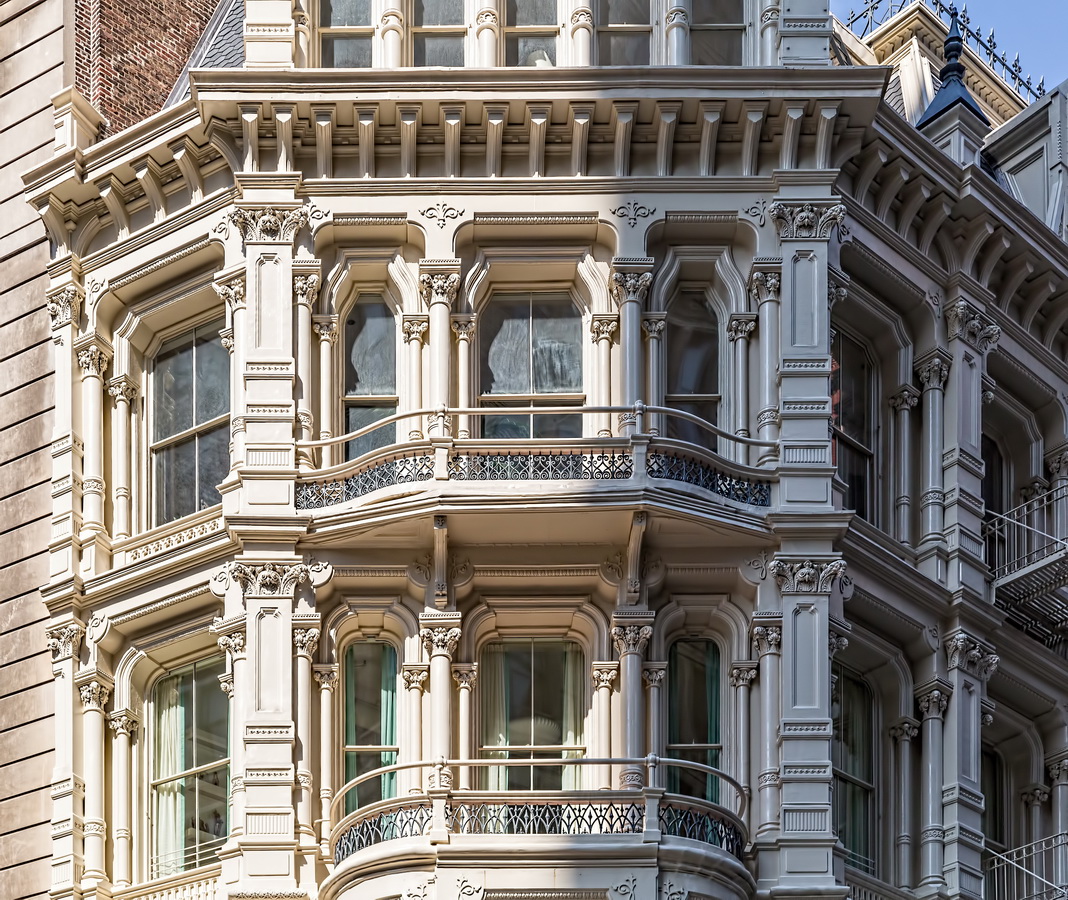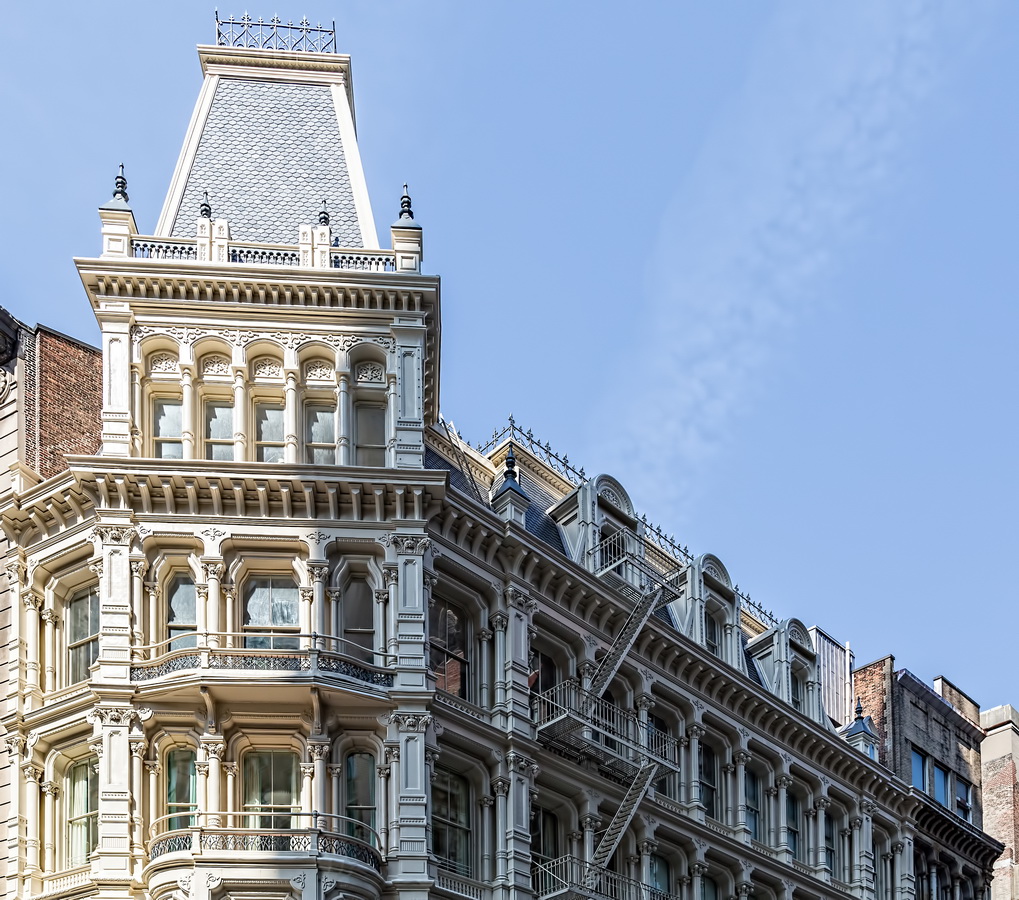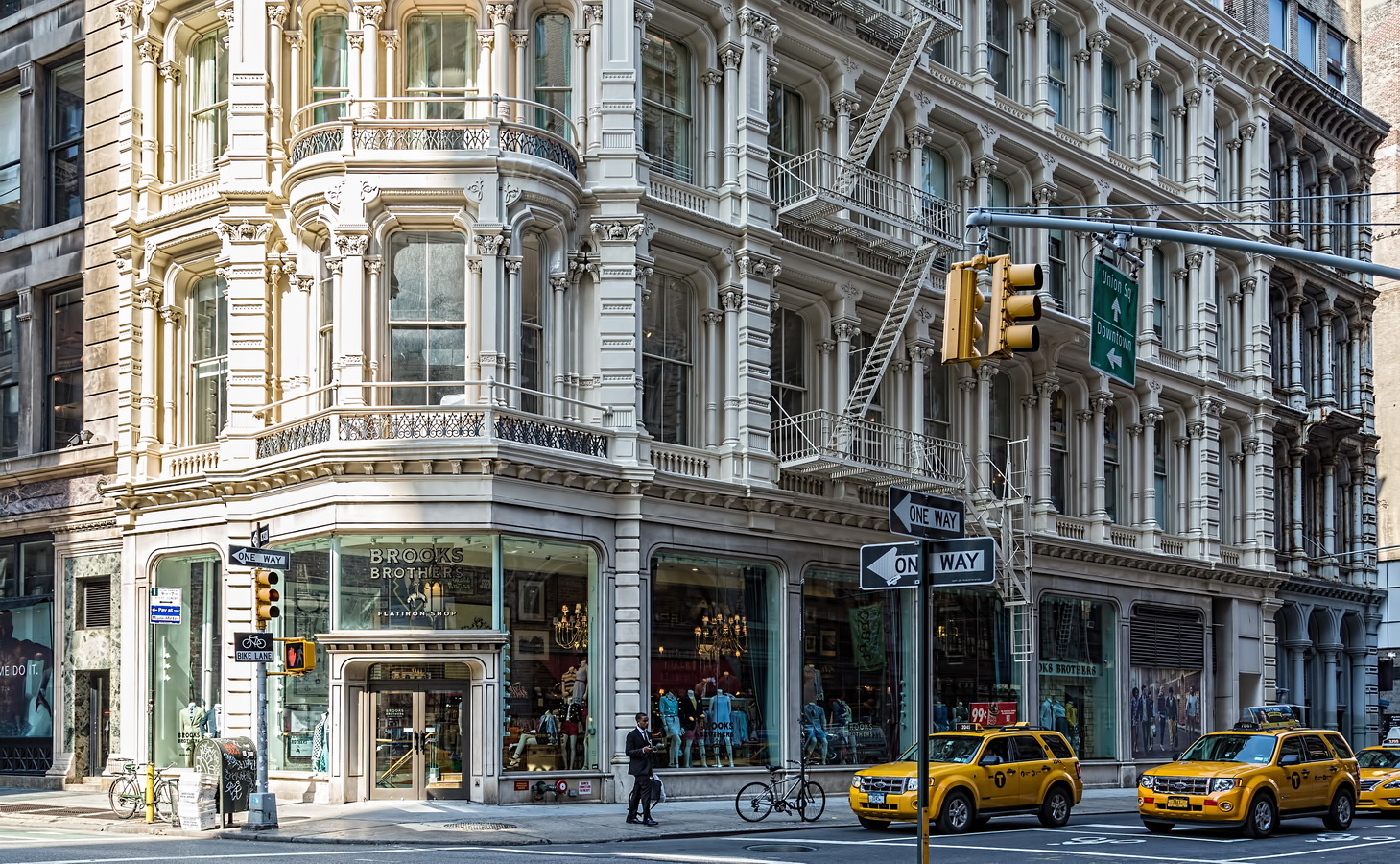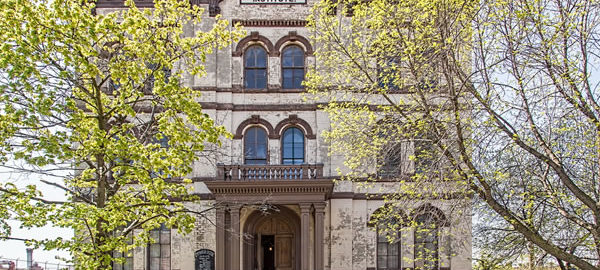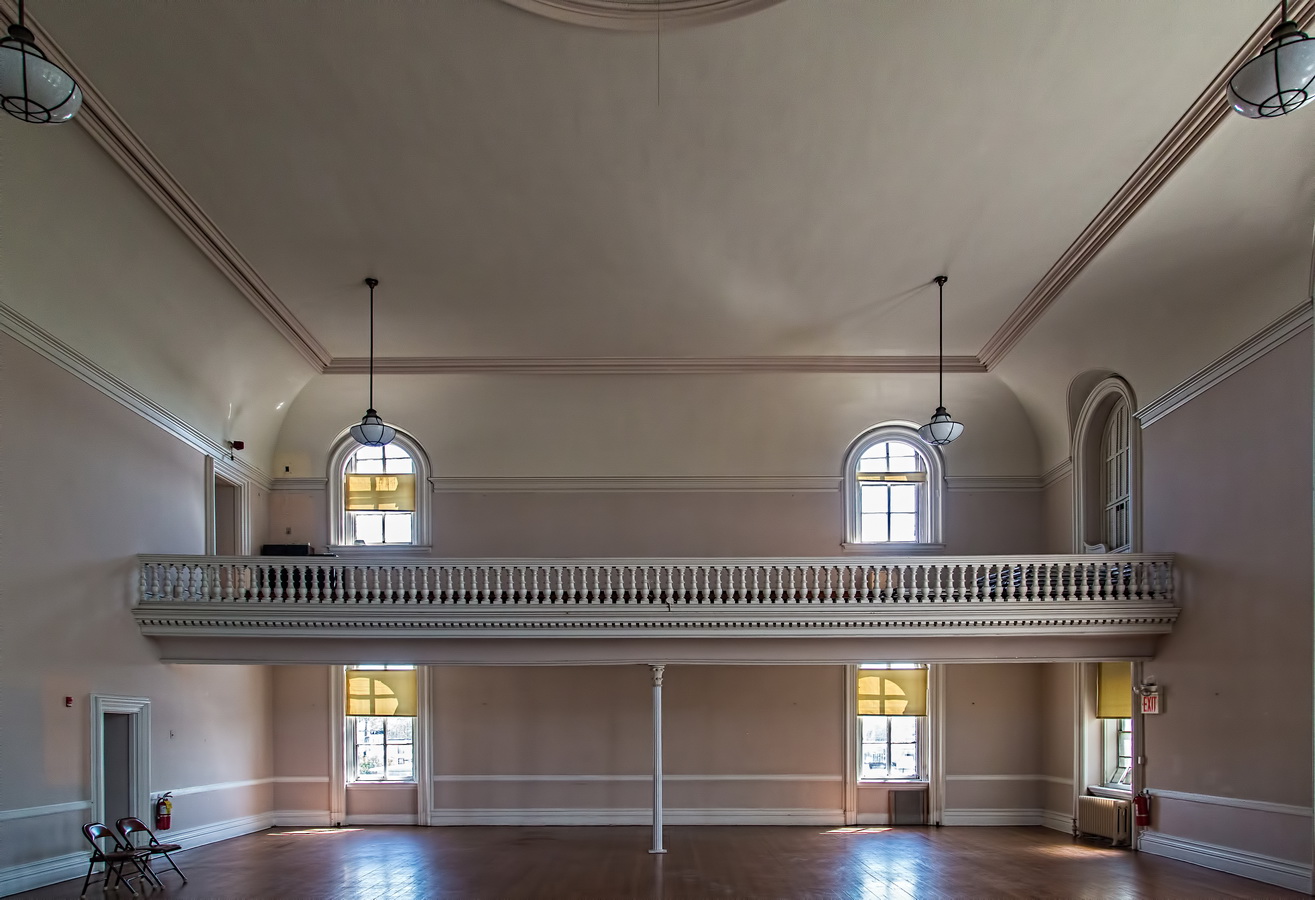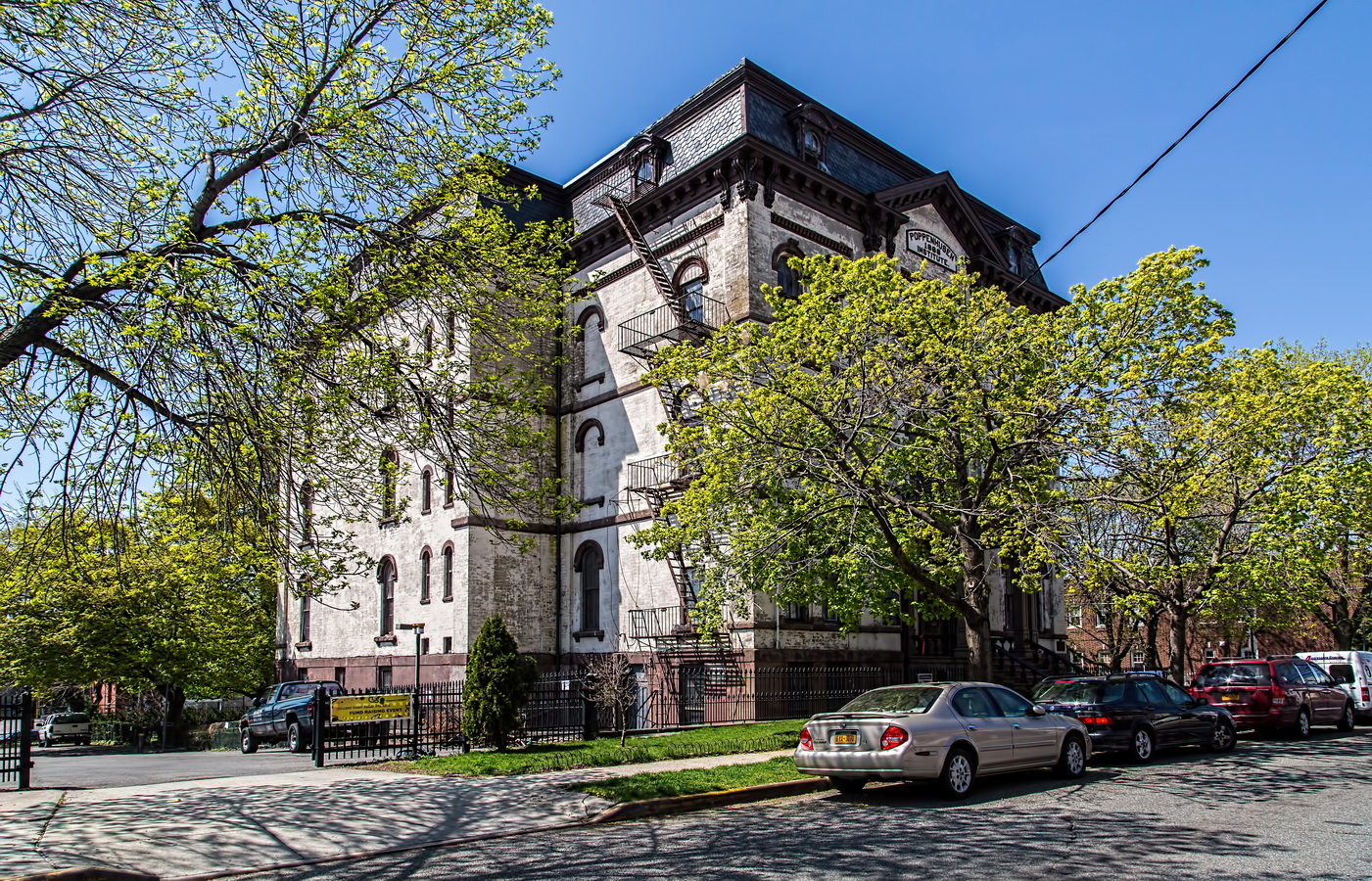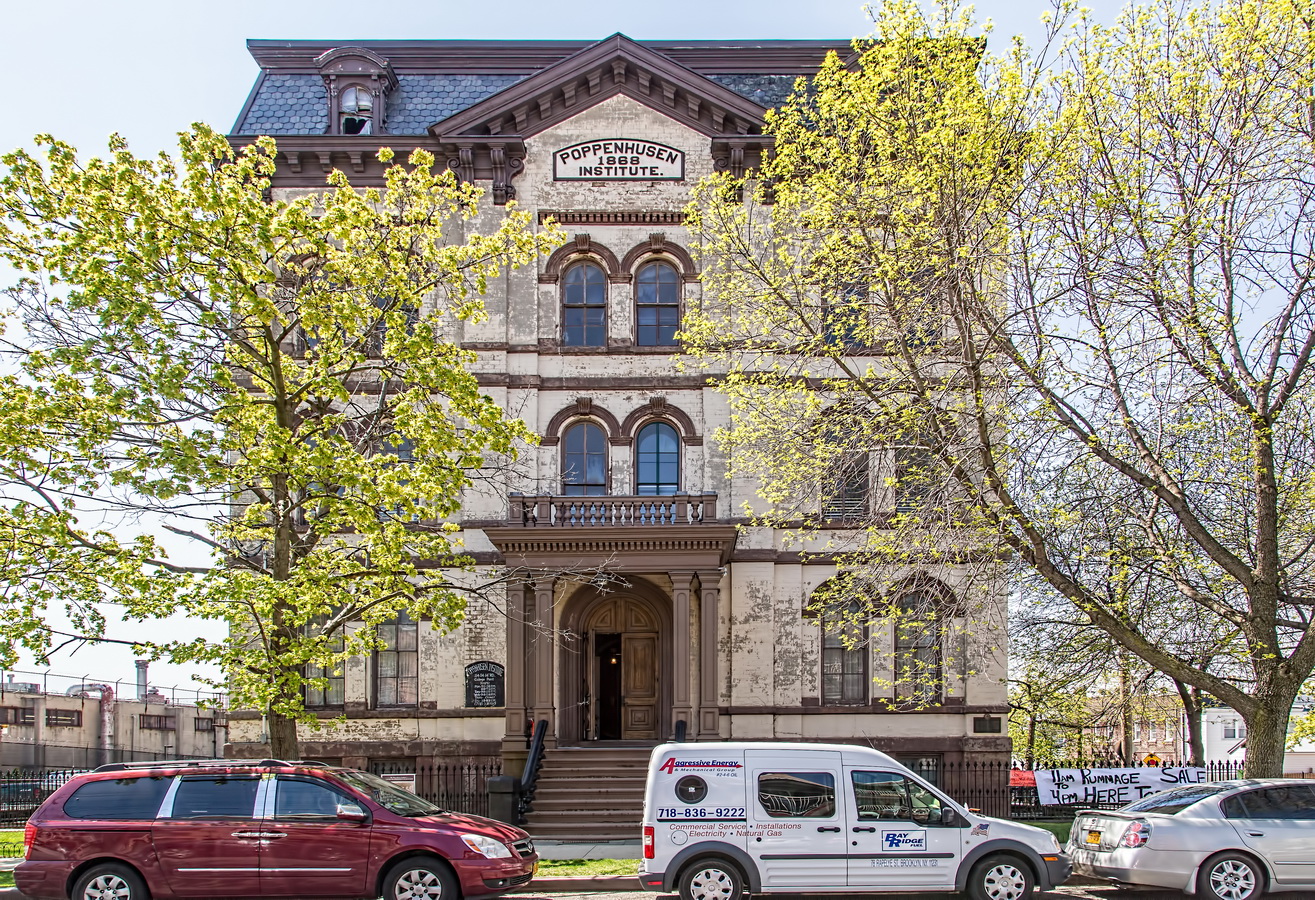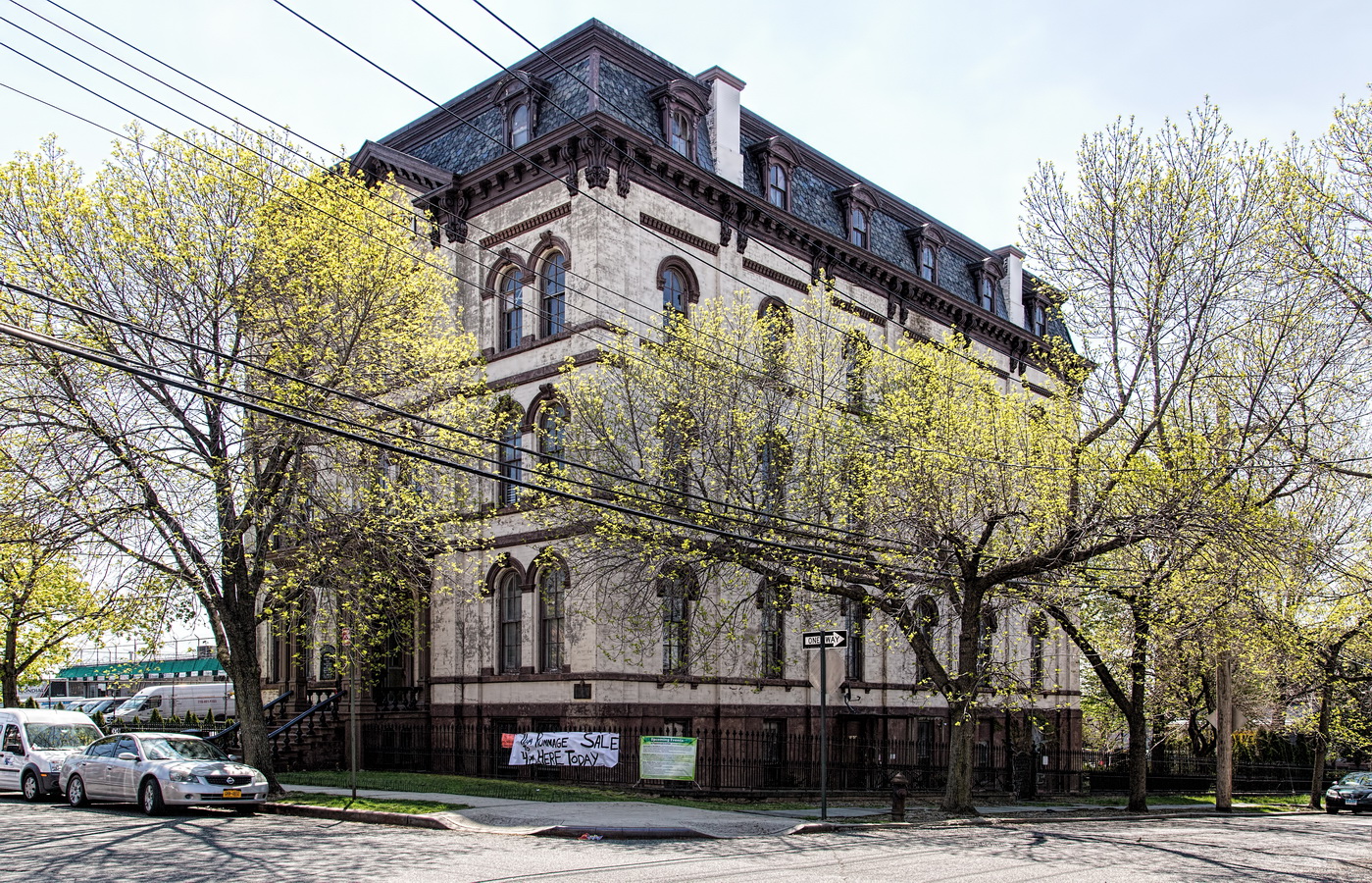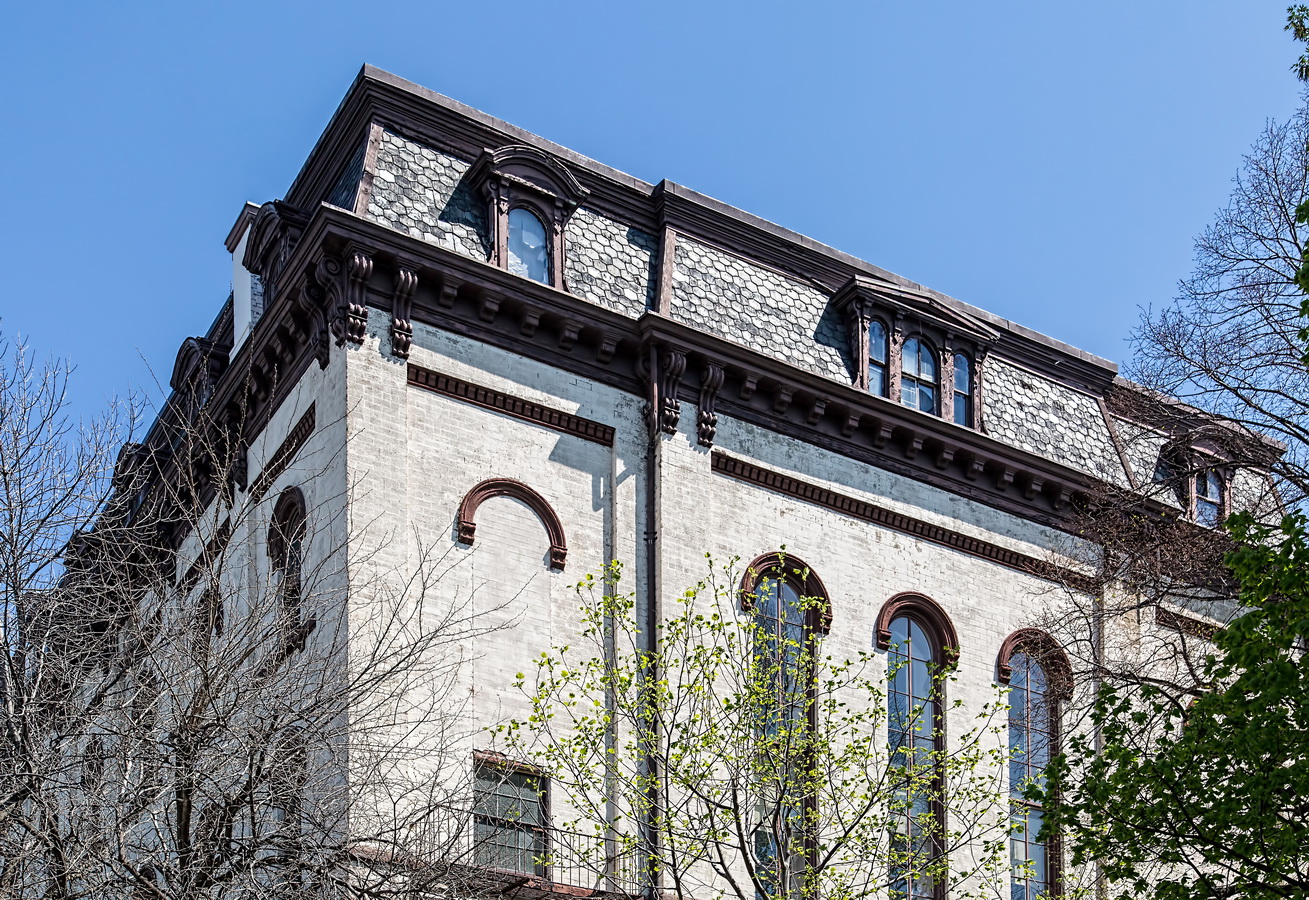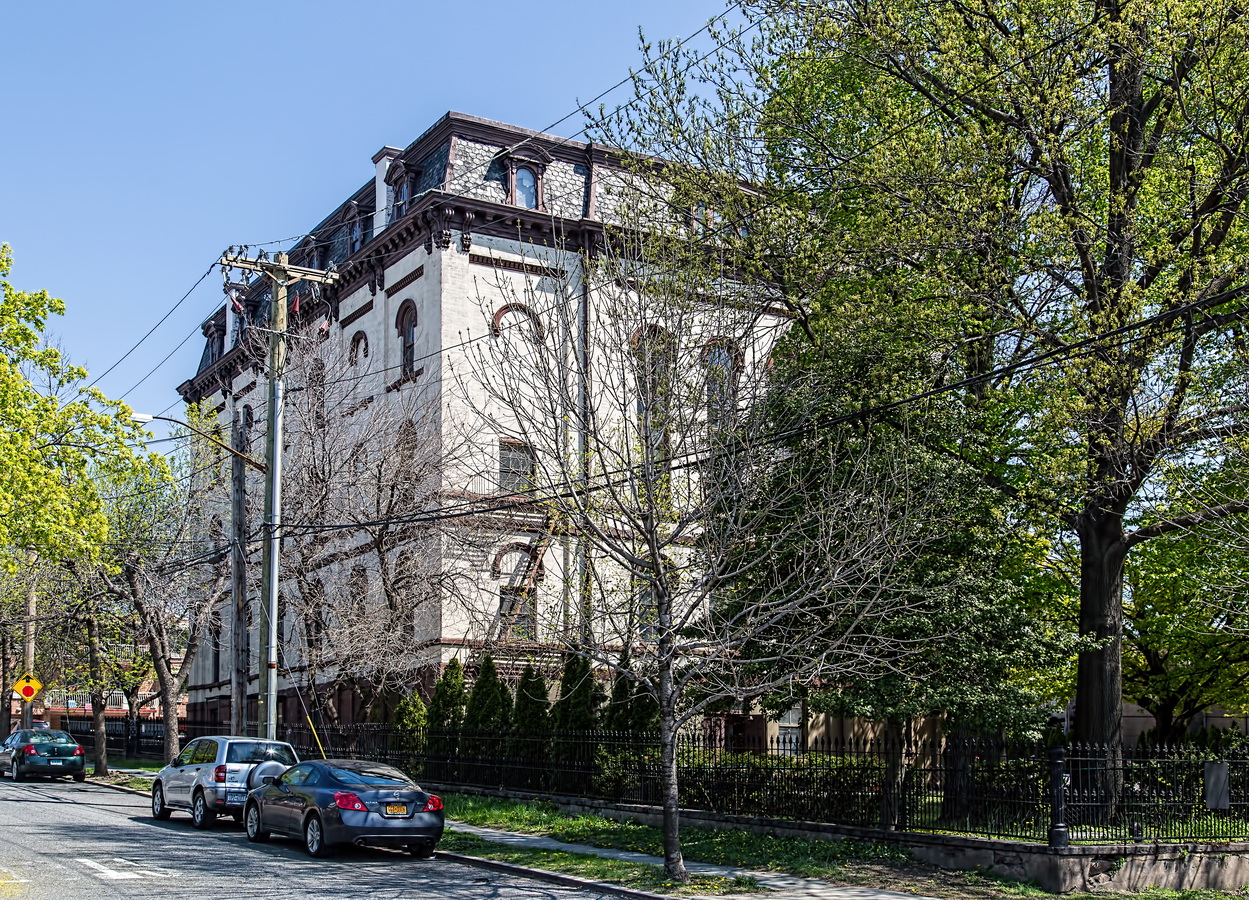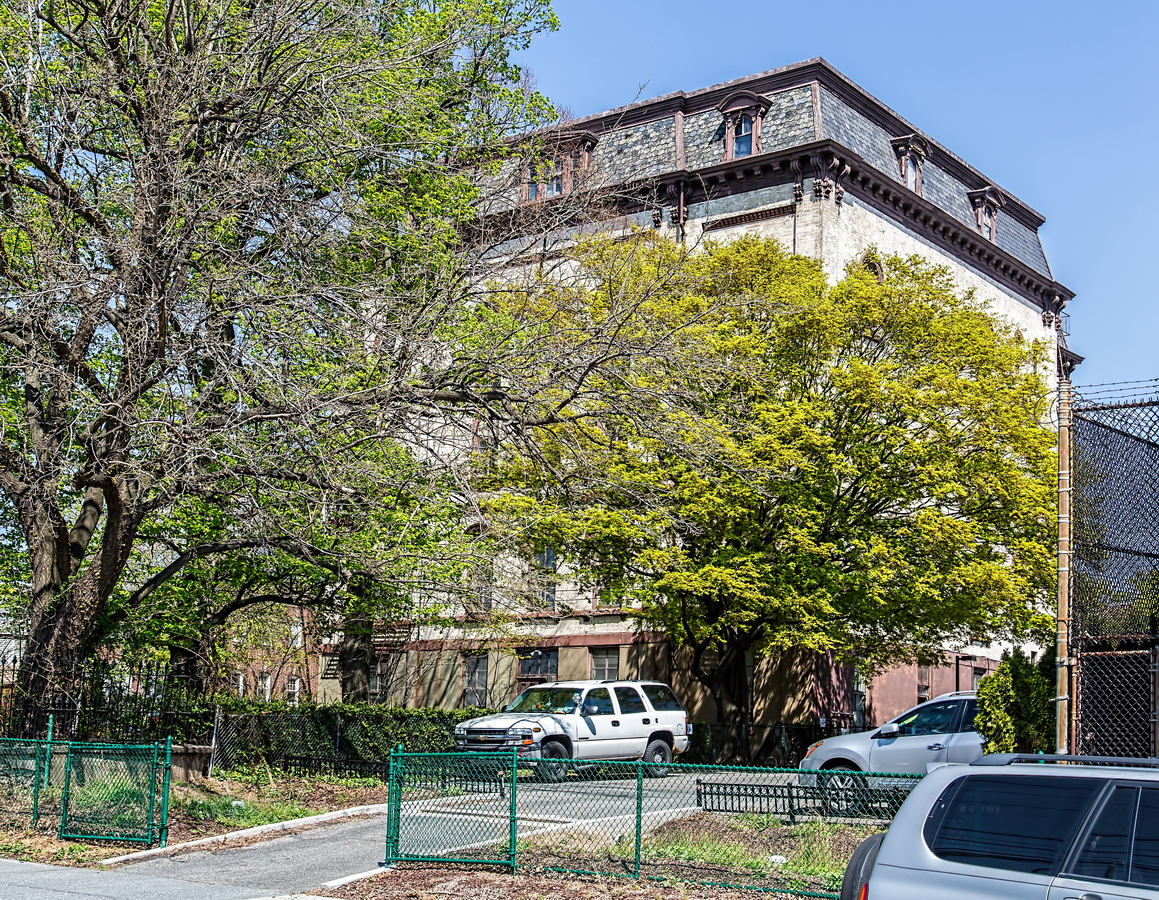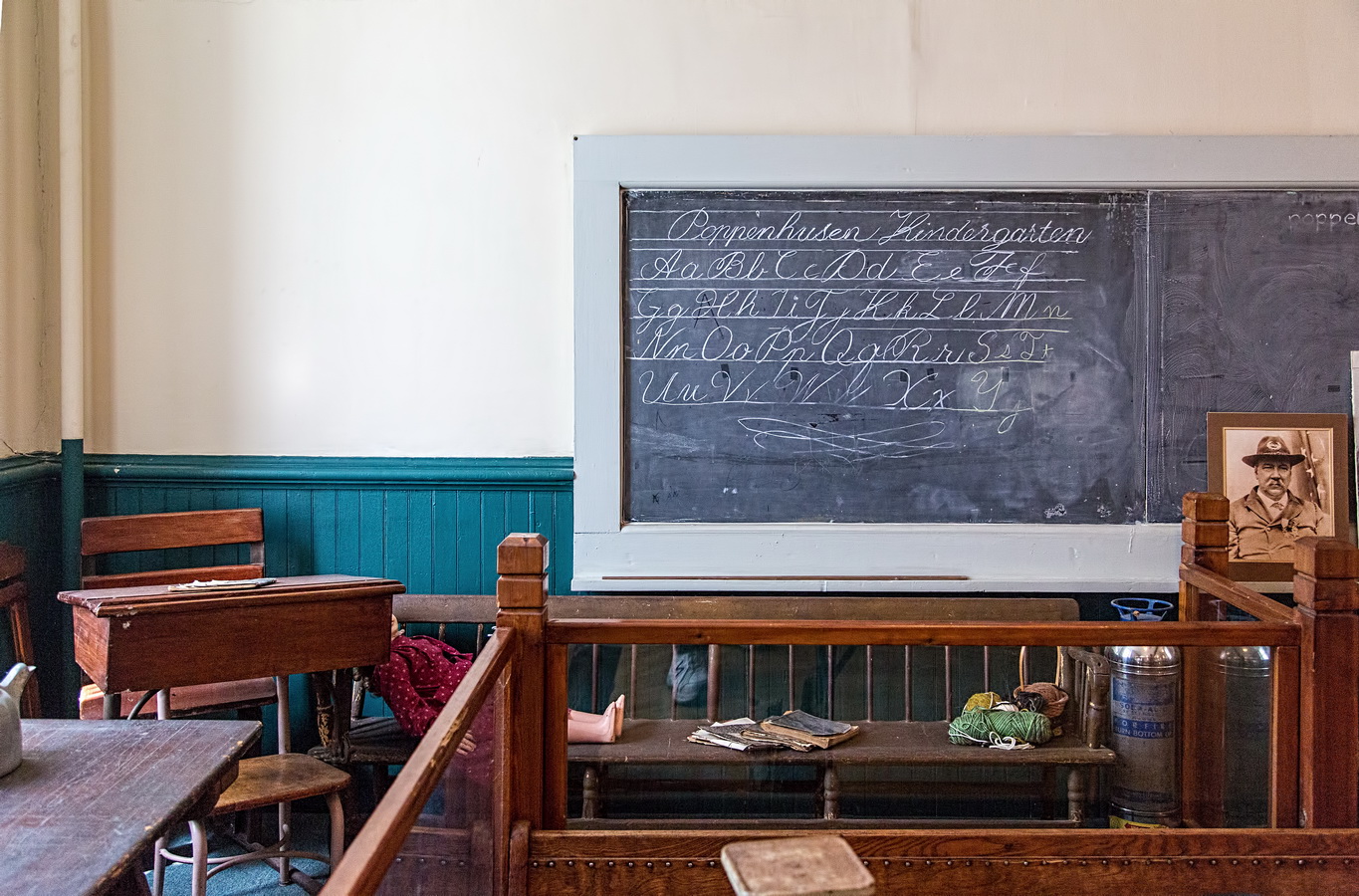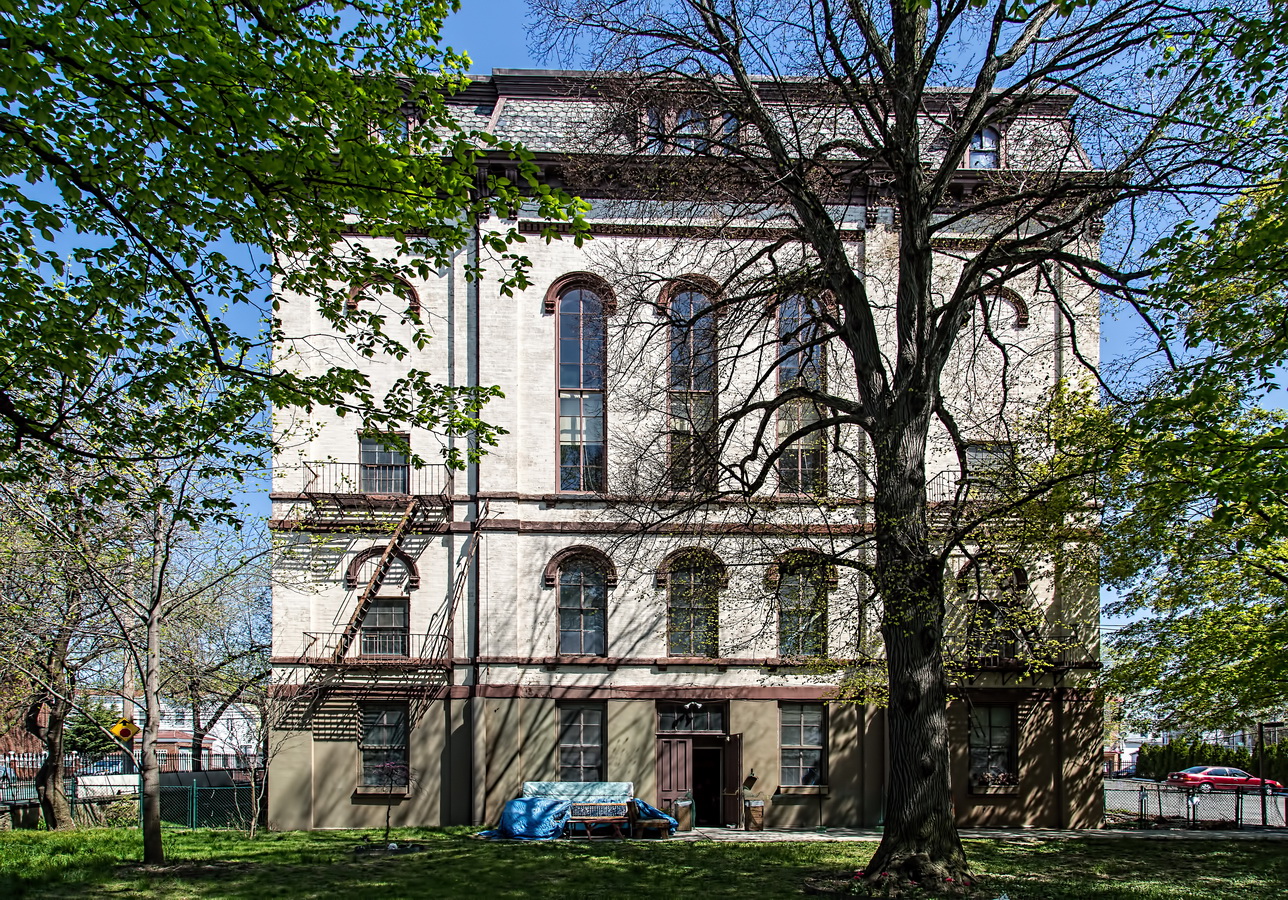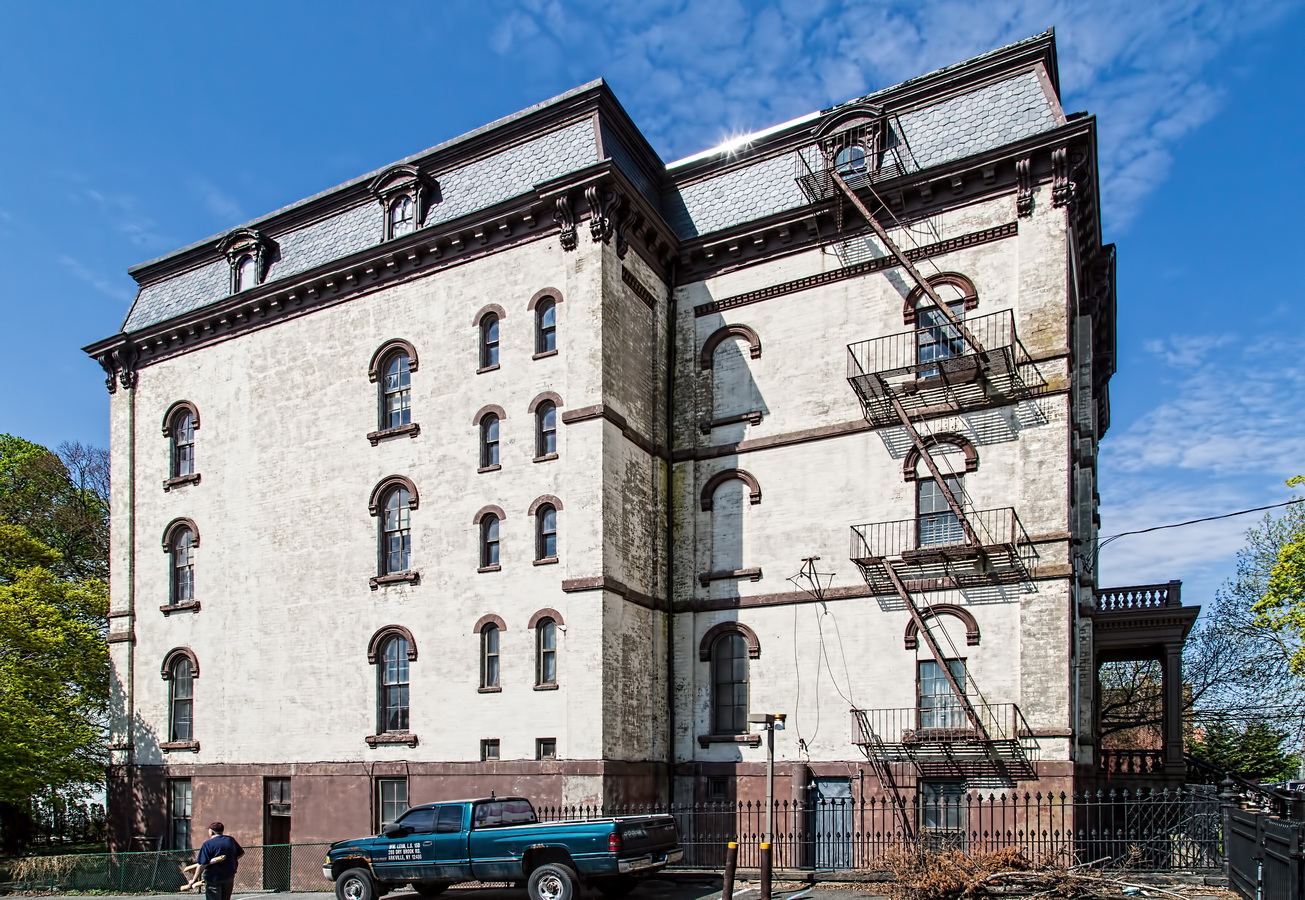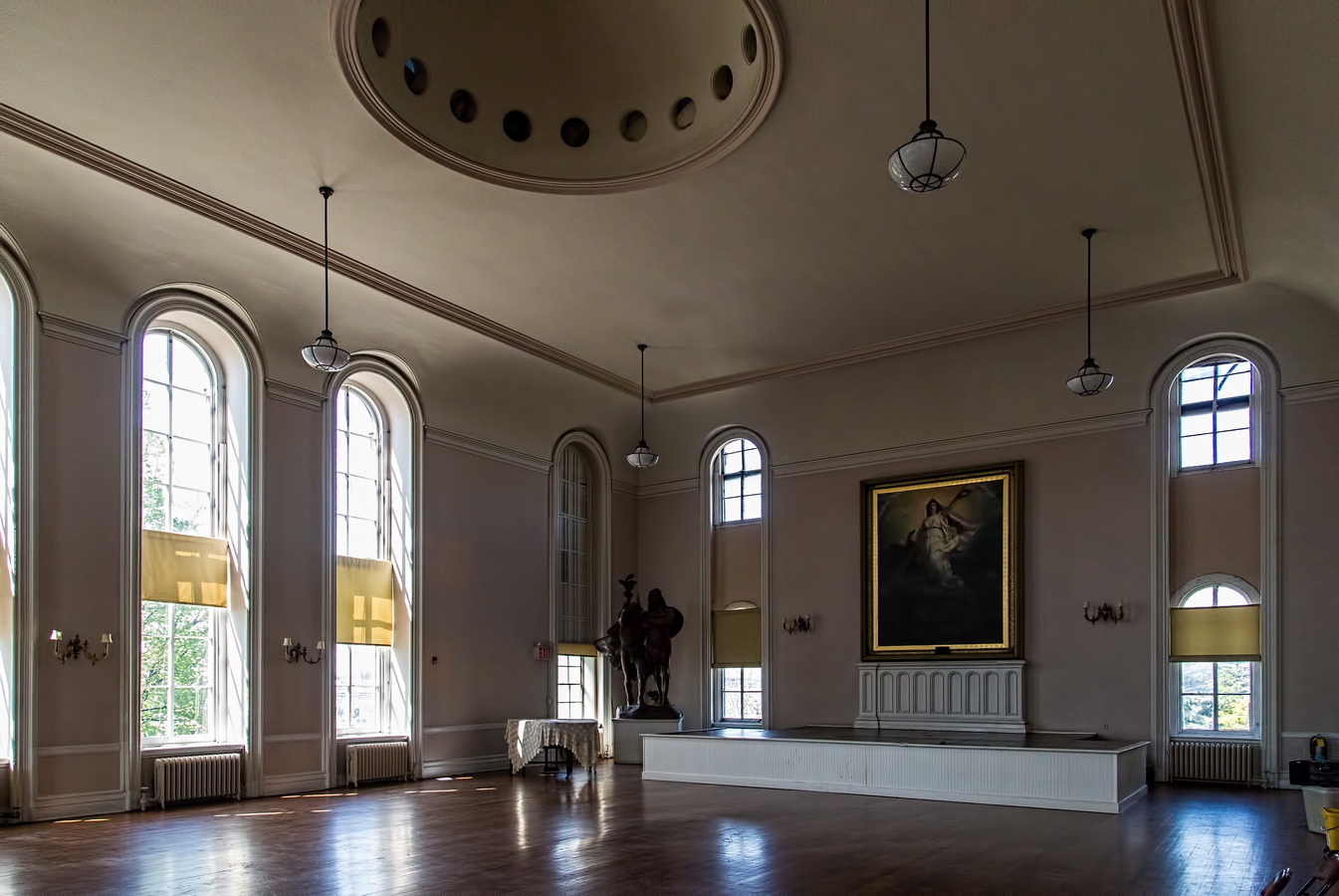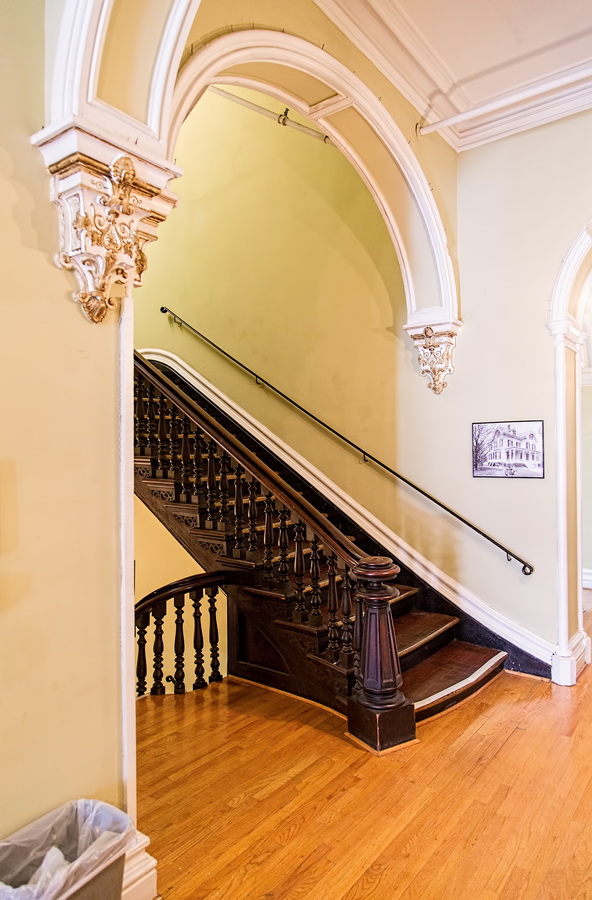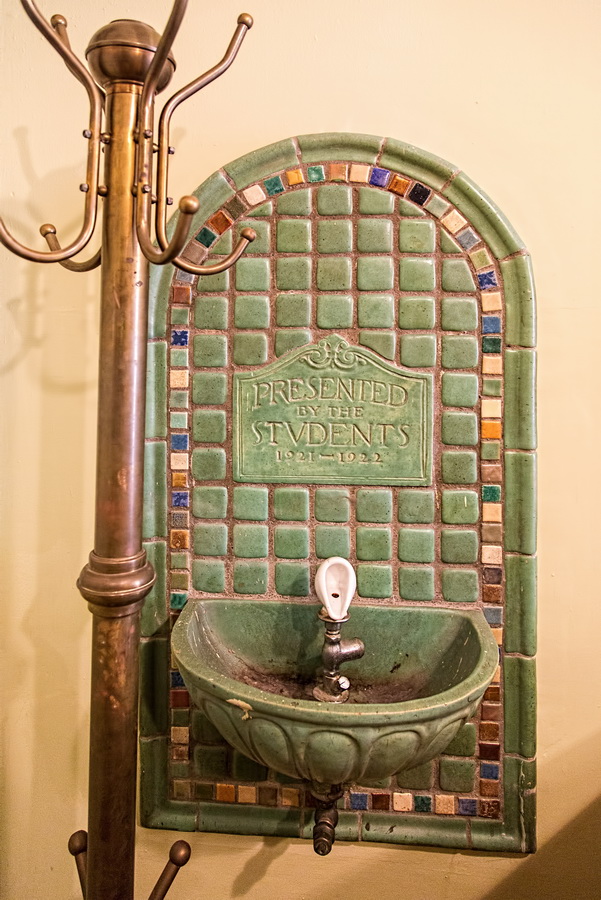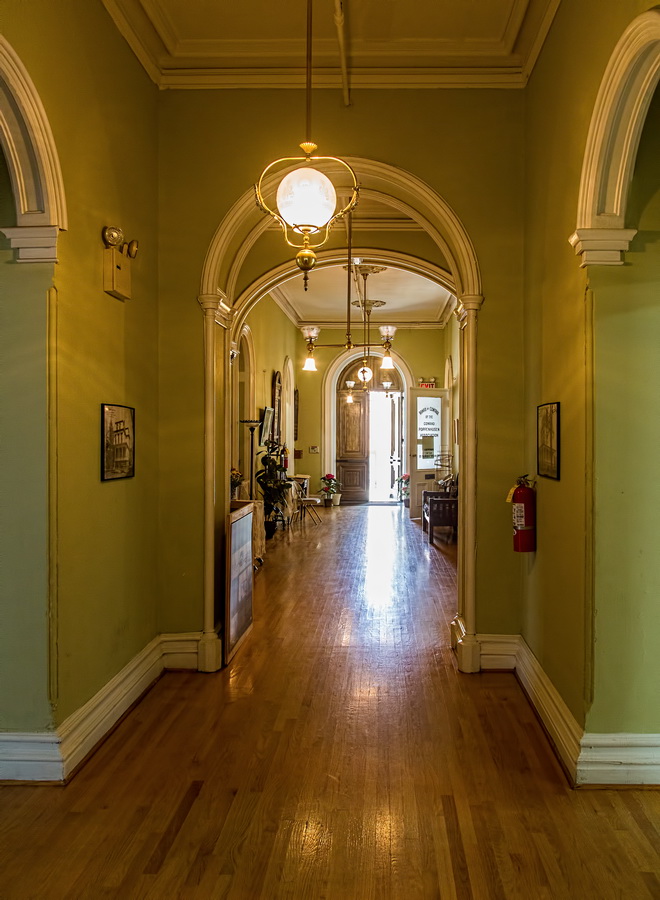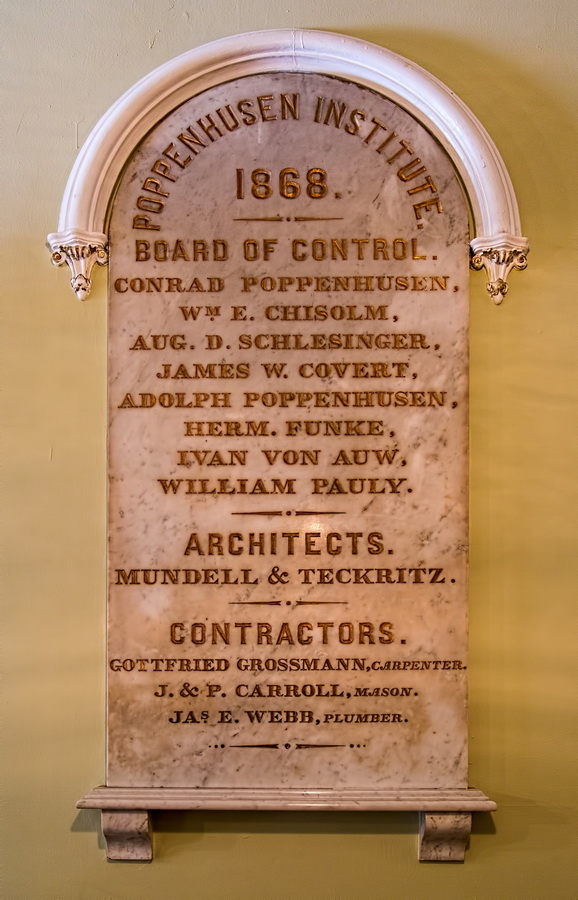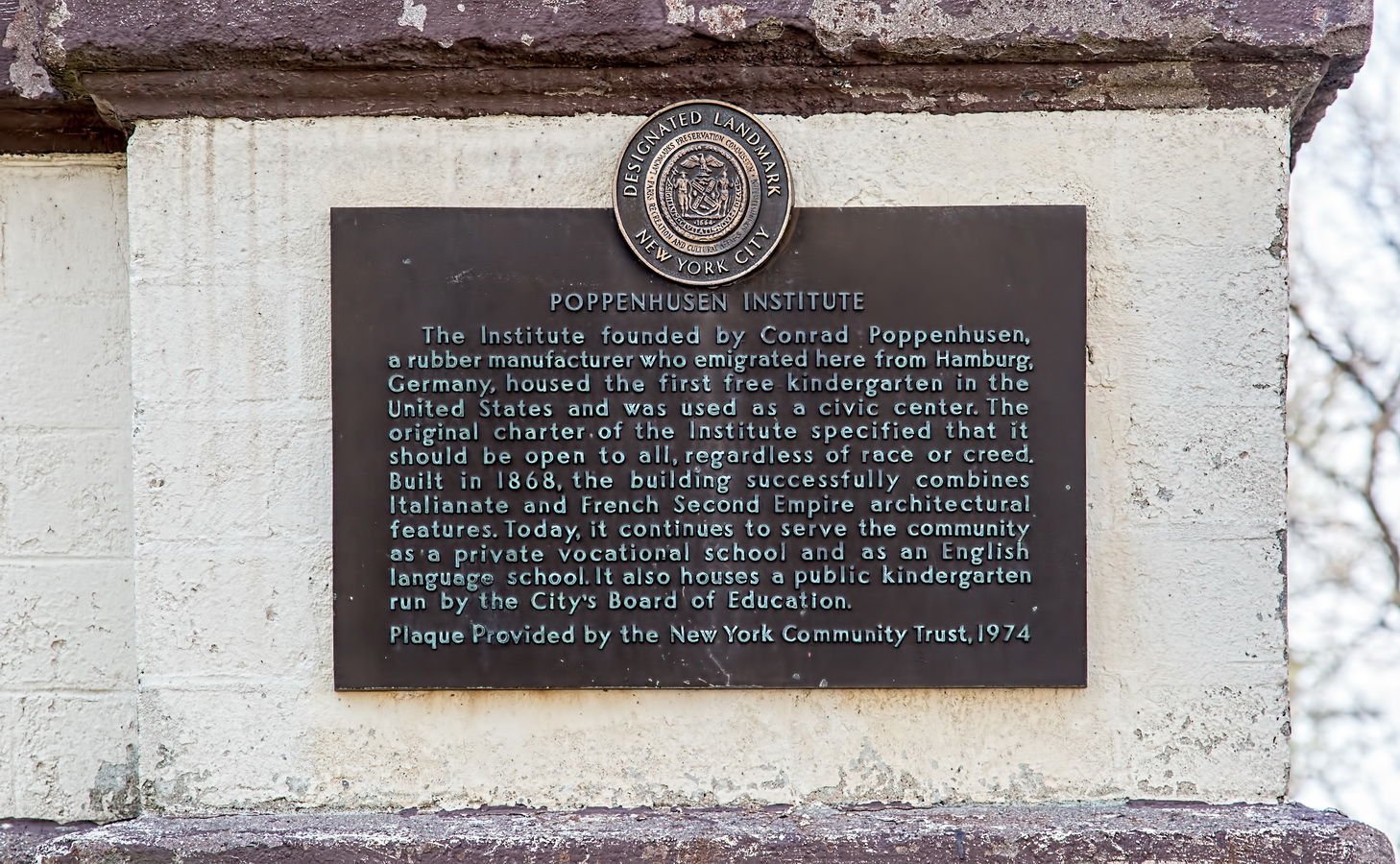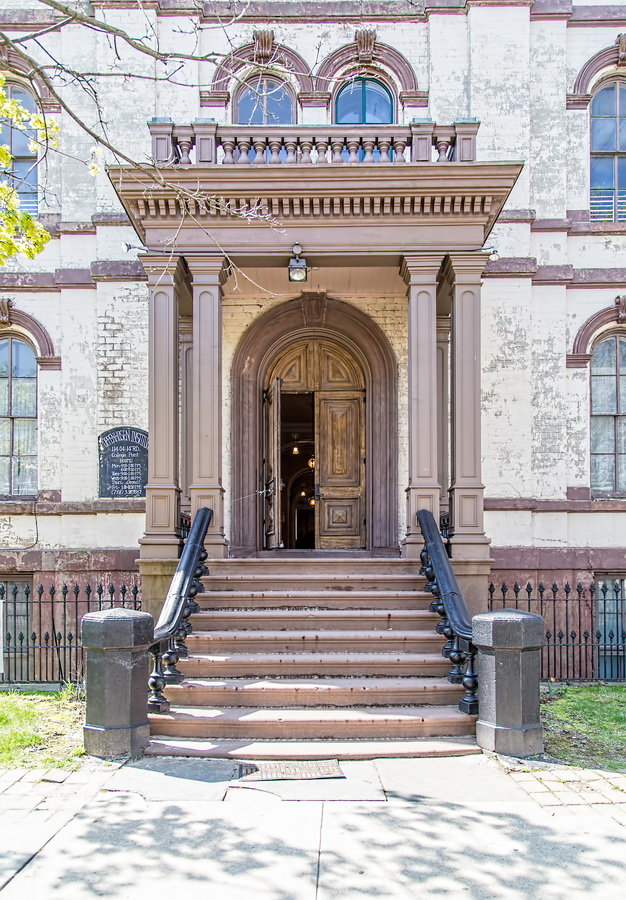Lord & Taylor Building, an individual New York City landmark and part of Ladies Mile Historic District, was decaying despite its protected status, until Spanish investors resuscitated the structure in 2009. However, 901 Broadway is only part of the store that existed from 1870 to 1914. A larger, L-shaped portion was separated in 1914 and remodeled – it’s now known as 897 Broadway.
The store was not the first cast iron building in New York, but architect James H. Giles innovated by letting the cast iron show, instead of disguising it as stone – common practice at the time, according to the NYC Landmarks Preservation Commission.
Lord & Taylor Building Vital Statistics
- Location: 901 Broadway at E 20th Street
- Year completed: 1870
- Architect: James H. Giles
- Floors: 5
- Style: French Second Empire
- New York City Landmark: 1977, 1989
Lord & Taylor Building Recommended Reading
- Wikipedia entry
- NYC Landmarks Preservation Commission designation report (1977)
- NYC Landmarks Preservation Commission designation report (Ladies Mile Historic District, Vol. 1, pg. 109)
- The New York Times Despite Protections, Landmarks Decay (August 2, 1987)
- The New York Times Streetscapes/The Former Lord & Taylor Store; A Ghost at 20th and Broadway Is Getting a New Life (May 7, 1995)
- City Realty: Carter’s View – Ladies’ Mile jewel at 901 Broadway sold
- Daytonian in Manhattan blog
- Greenlight Construction Management: Facade Restoration: 901 Broadway
